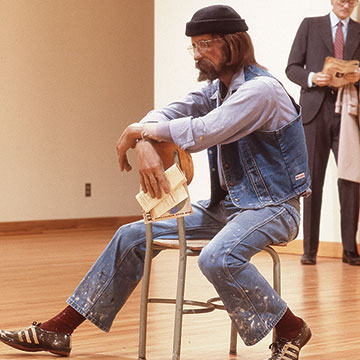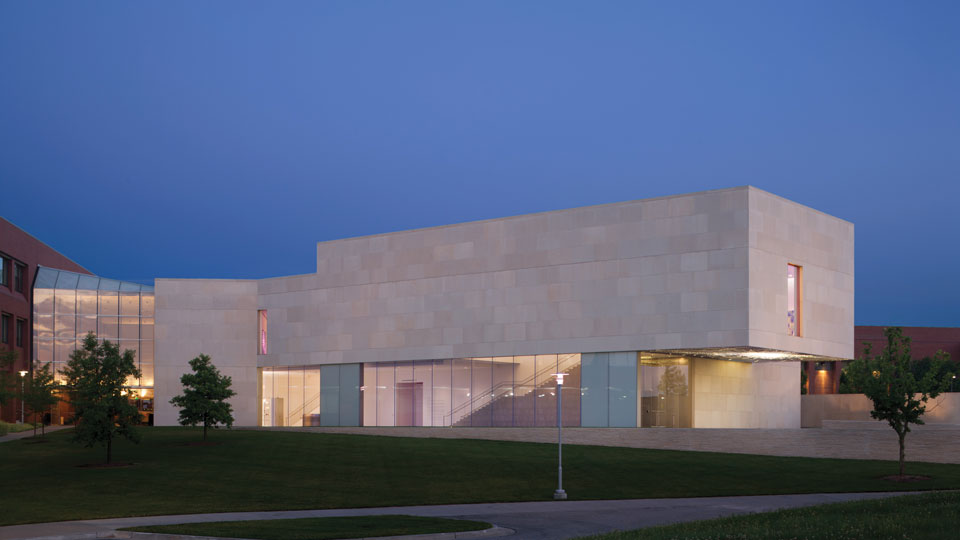Duane Hanson · Sculptures
Seven pieces by Duane Hanson, all on loan from local collections, will be shown in the JCCC Gallery of Art. Hanson’s sculptures fascinate by their high degree of realism. A master of trompe-l’oeil, Hanson produces figures that continue to “trick the eye,” and there are many stories of people who have mistaken his creations for real people. His sculptures transcend the illusionism, however, and comment tellingly on contemporary American society and culture.
The appeal of his work stems from its accessibility. “People like to people-watch, but they feel guilty about doing it,” Hanson says. “With my figures, they can go up to them, stare at the wrinkles, the hair and skin tone – something they wouldn’t dare to do normally. People are fascinated by how other people really look. And they seem to approach my figures as people they know.”
Hanson’s work is more than mere illusionism of a wax work statue. Hanson documents the lifestyle of average American types, sometimes tacky, often weary or bored, but always genuine with a sense of empathy for their particular situation. The sculptor casts his pieces directly from live models to ensure realism. After choosing his theme, he needs to find a person who physically looks the part, and sometimes he combines parts from several models to get the perfect composite portrait. Using rubber and plaster, the artist makes a mold of the entire model in sections. The sculptures have been traditionally cast in polyvinyl acetate, and, more recently, in bronze. Hanson meticulously completes the sculptures with paint, hair and clothing.
Now based in Davie, Florida, Duane Hanson was born in 1925 in Alexandria, Minnesota. He studied at Luther College in Decorah, Iowa, and at the University of Washington before returning to Minnesota where he completed his BA in 1946 at Macalaster College in St. Paul. Hanson graduated with an MFA in 1951 from Cranbrook Academy of Art in Bloomfield Hills, Michigan.
The exhibition gallery guide features an essay by Mark Spencer, Curator, Yellow Freight System, Inc.
This exhibition would not have been possible without the generous loan of works from numerous collections. We are most grateful to Jerry and Margaret Nerman, Richard and Gloria Anderson, Byron and Eileen Cohen, Gilbert and Lila Silverman, Yellow Freight System Inc. and the Nelson-Atkins Museum of Art for their assistance with this exhibition. In addition, we would like to thank Dr. Joseph and Margery Lichtor for their generous financial support of this exhibit.





